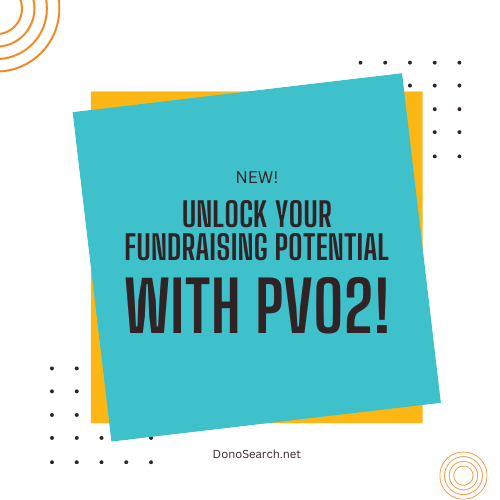
Got a Plan for Making Your 2022 Goals? Start with Your Donor Relationship KPIs.
It’s January. As you brush the confetti off your desk, put the champagne bottles in the recycling bin, and count those year-end gifts, you’re probably thinking about the fundraising plan for 2022.
Good thinking.
If you have a plan, you’ll raise a third more money from individuals, you’ll have almost twice as many donors–who give larger gifts.*
*Individual Donor Benchmark Report, Heather Yandow, Third Space Studio
A good plan starts with a look back at how you did last year. You’ll need to identify where you fell short of (or achieved!) your goals and figure out why, so you can adjust your plans. This is where KPIs (Key Performance Indicators) come in.
Nonprofit KPIs (Key Performance Indicators) are measurable values that show us the gaps between what we set out to raise and what our donors actually gave in response to our efforts. We use Donor Relationship KPIs to evaluate their success in inspiring long-term, significant generosity from individual donors.
WHAT ARE DONOR RELATIONSHIP KPIs?
Donor Relationship KPIs use giving data from your CRM to measure the positive or negative impact of our engagement strategies on the relationship we have with our donors. They tell you how they feel about your cause through their giving.
Want to know how to calculate DR KPIs on your own? Click Here for a Cheat Sheet of the formulas.
DID YOU KNOW?
DonorSearch Ai and DonorSearch’s machine learning software will provide you with highly predictive scores for retention, acquisition, and high lifetime value prospects without your having to pull and crunch the numbers. Want to know more about DonorSearch and DonorSearch Ai? Click GET A DEMO below.
GET A DEMO
Donor Retention Rate
Your donor retention rate tells you how many of your donors keep giving on a year-over-year basis. It’s the number of donors you manage to keep with respect to the number you had at the start of the year.
- Why is a good retention rate important?
A good retention rate keeps the cost of acquiring new donors down. A retained donor will likely give more frequently and in higher amounts, because they have a stronger relationship with your cause. - HOW TO USE IN 2022
Evaluate your stewardship practices. How did you acknowledge the donors you lost or kept? When do you follow up? Do you communicate regularly with your donors?

Lapsed Donors
Lapsed donors account for all of the donors who were not “retained”.
- Why should I be concerned about lapsed donors?
A high number of lapsed donors indicates that your donors don’t feel valued enough to continue to support your cause. - HOW TO USE IN 2022
Examine your donor retention efforts, like donor recognition and continued engagement campaigns.
Donor Base Growth Rate
Donor base growth rate measures an increase or decrease in the total number of donors to your organization over a given time period.
- Why should I care about a decrease in my donor base?
If donor base growth is down, it’s probably not your only metric that’s less-than-ideal. - HOW TO USE IN 2022
Look at your donor base growth rate alongside some of the other metrics to determine exactly why your number of donors isn’t growing.

Donor Lifetime Value
Donor lifetime value (LTV) predicts how much money you can expect to receive–on average–from your donors during the lifetime of their giving to you. NOTE: Donor LTV is more of an estimate than an exact calculation, so it’s better to think of it as the average lifetime value of all of your donors or a specific donor segment.
- What do I learn from these numbers?
Like your donor retention rate, they tell you the overall potential of your donor base. When you compare the averages between segments or campaigns, they’ll tell you where your most valuable donors come from, and which solicitation strategies raised more.
- HOW TO USE IN 2022
You’ll know which channels to prioritize, what communications to use, and what tactics (like acknowledgment) to enhance.

Donor Acquisition Cost
Donor acquisition cost (DAC) is how much you spend to acquire one donor.
- What do DACs tell you?
DAC metrics are especially useful when compared across channels, campaigns, or time periods. - HOW TO USE IN 2022
If you can demonstrate that one channel (like email) has a lower DAC, you can justify investing in that channel.

What if these numbers were already–and you could simply move on to strategy?
DonorSearch’s machine learning algorithm not only delivers these critical scores, but the machine learning technology makes each rating more predictive as you add more data. Want to see how AI/machine learning can accurately predict who will donate in the next 12 months? Click GET A DEMO below.

